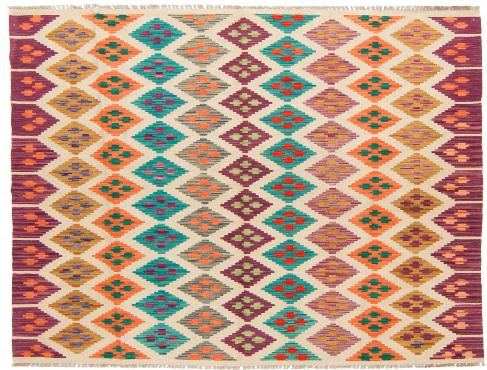Rugs were made initially by the nomadic tribes to shield them in tropical as well as frigid weather conditions of the countries they are residing in. Then these rugs found their utilization in decorating the tents of tribal people and slowly, with time became a quintessential part of the world-wide home decor. The credit for initiating the carpet weaving culture is mainly attributed to the tribes of Central Asia. This culture began expanding to the middle east with countries like Persia dominating the handmade rug market, globally and soon enough this culture extended to South Asia. In South Asia, the hand-woven rugs of countries like Afghanistan are renowned.
AFGHAN RUGS
Afghanistan, a south-Asian country adjoining Iran, Pakistan and Uzbekistan in the west, east and north respectively has a diverse ethnic culture. The country is home to multiple ethnic groups like Hazaras, Pashtuns, Uzbekis and much more. Owing to the multifarious traditions, the rugs weaved here are of variance, with each telling tales of their respective tribe.
PATTERN:
Afghan rugs mostly weaved at western and northern Afghanistan, are also handwoven by Afghanis residing in Pakistan. Afghani rugs, which are woolen rugs, have pattern inspired by the historical conflicts and wars that have shaped it into present-day Afghanistan. One can also find Afghan rugs having eccentric design as well as designing symbolizing a wishful desire or a prayer like the Baluch prayer rug weaved by the Baloch people.
COLOR:
The color used in making the Afghan rugs are extracted from plants, minerals, and vegetables. The parts used could be the roots, berries, barks or leaves. Sometimes colors are also drawn out of fungus. For example, red is extracted from the roots of the madder plant; blue is obtained from the indigo plant and so on.
WEAVING and DURABILITY:
The rugs can be found, both finely as well as coarse woven. These rugs made from wool also make use of either goat or horse hair. The finely woven rugs are made by the Ersari tribes. Ersari tribal weavers are famous for their elaborate and coveted antique rugs. Irrespective of the kind of the weaving done, the Afghan rugs are staunch, durable and of course magnificent.
Mostly two types of Afghan rugs are famous in the market:
- Khal Mohammadi
- Afghan Aqche
Khal Mohammadi, named after its designer is woven in and around the are of Kunduz or in the north of Afghanistan. The red tones with black or blue detailing make these carpet, stand-out of the crowd. The pattern on these rugs is Gul and Fil Pai designs inspired from Mohammadi’s heritage. The Afghan Aqche are hand-made by the Turkomans in Central and Northern Afghanistan.
Keeping in mind the growing commercialization which is leading to mass production, one must be careful while buying an authentic Afghan Rug and hence must check the following aspect:
- Knot per square
- Flip the carpet to check the degree of hand-weaving.
- Natural dyes wear off a bit and are coarse.
- Authentic Afghan rugs will have a unique pattern, signaling and testifying their hand-made and coarseness signifies hand-woven technique.
Above stated are just many of the few reasons why these esthetic Afghan rugs have been honored with international awards for rug designing multiple times.
If you wish to give your home a palatial nudge, look no further than the majestic Afghan rugs.


